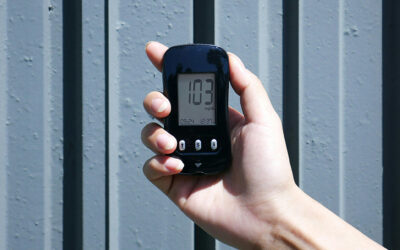Have you ever purchased meat from the grocery store, only to open the package and be greeted by an unappetizing smell? Each year, an estimated one in six Americans, totaling 48 million people, fall ill due to foodborne illnesses.
Nowadays, the food on our plates often makes long journeys before reaching us. During this time, it is important to monitor transportation conditions to guarantee consistent and adequate food storage. The risk of food spoilage, particularly meat, fish, and cheese, increases with demand for greater variety and availability of food.
This can lead to longer supply chains and extended storage times, which increases the chances of improper handling, inadequate storage conditions, and transportation delays, all of which can contribute to food spoilage. The only way consumers can check the integrity of their food is using the expiration date — or with an acute sense of smell.
A smart packaging technology
Researchers at the Department of Chemistry and Industrial Chemistry of the University of Genoa are trying to find a better solution. They have been working on a smart packing technology that changes color depending on the quality of the product in the package.
“As the food chain expands, there is an increasing need for cost-effective and easy-to-read smart sensors for packaging to ensure safety and quality,” explained Paola Lova, assistant professor at the University of Genoa and lead author of the study published in Macromolecular Chemistry and Physics.
Lova and her collaborators, including Professor Davide Comoretto from the University of Genoa, have devised a novel sensor that is capable of detecting compounds known as amines, which are produced during the protein degradation process in meat, fish, and dairy products. As the meat undergoes degradation, the levels of amines increase, resulting in a noticeable color change in the packaging that can be easily detected.
Currently, evaluating amine levels in food products is expensive and time-consuming, as the food samples need to be analyzed in specific laboratories with specialized personnel and instrumentation. This is where the smart packaging comes in.
The sensor developed by the University of Genoa team can be easily detected by the naked eye, making it readily accessible for consumers. It has demonstrated high accuracy and reliability, and according to Lova, it can be readily scaled up for commercial use.
The device’s structure comprises alternating layers of polymers that form photonic crystals. When this structure interacts with amines present in the air within the food package, the polymer layers undergo swelling, influencing the optical properties of the crystal and leading to a visible color change.
Optimizing performance
One initial obstacle the scientists encountered was the degree of reversibility of the bond between the amines and the polymers, which can easily be broken, causing the colors to fade and, consequently, risks false negative results. “When the analyte [amine] is removed from the environment, the response of these systems is usually spectrally reversible. […] it could provide false readings and allow tampering to mislead the customers when the sensors are used in packaging,” said Lova.
This issue was overcome by adding another compound on one of the polymer layers to strengthen the bond formed with the amines by making them irreversible. The polymers are both non-toxic and biocompatible, meaning they can be safely used for food packaging.
The technology was tested in the lab with a compound called isopropylamine, which resembles amines’ structure, and the results were positive. “[This technology] can potentially be used on any plastic packaging used in the food industry to detect premature spoilage, which is much more effective than the expiration date indicated on the label,” said Lova.
The group has already widely investigated these sensors to monitor specific pollutants as well as air and water quality. From a consumer point of view, we can only wait until smart packaging will help us confirm the quality of the food on our table.
Reference: Davide Comoretto, Paola Lova, et al., Colorimetric polymer sensors for smart packaging, Macromolecular Chemistry and Physics (2023). DOI: 10.1002/macp.202300022
Feature image credit: Gregor Moser on Unsplash

















